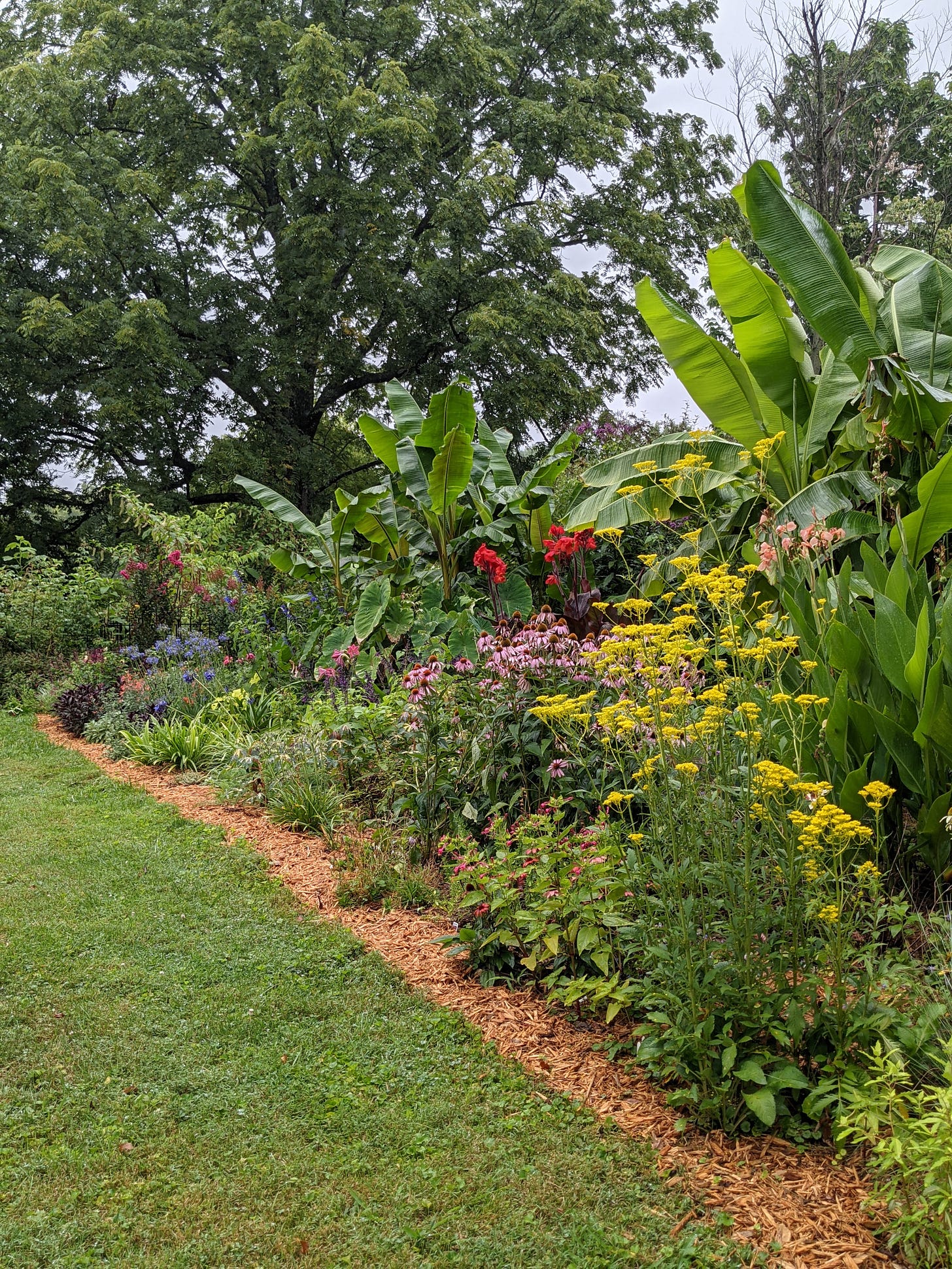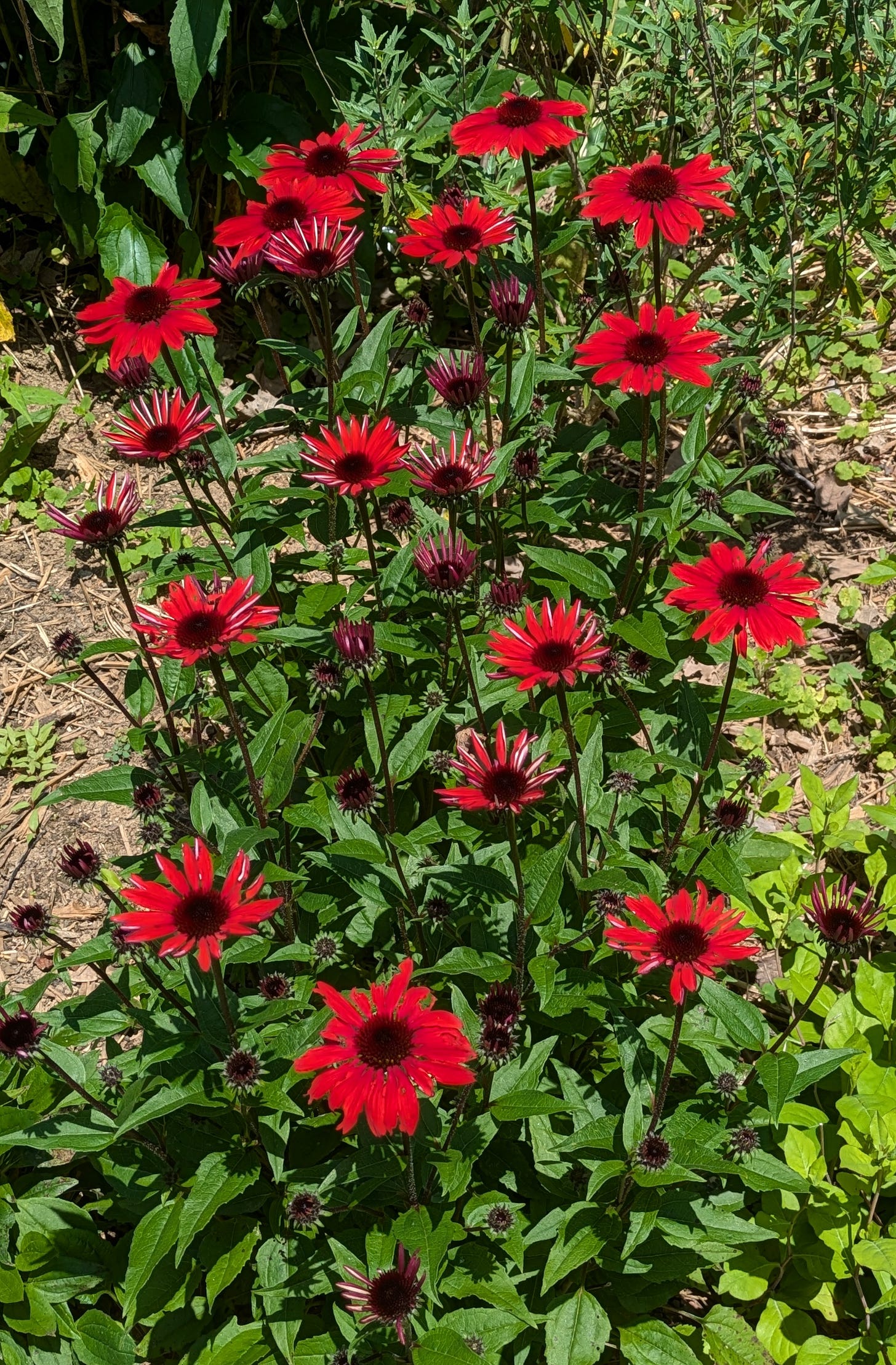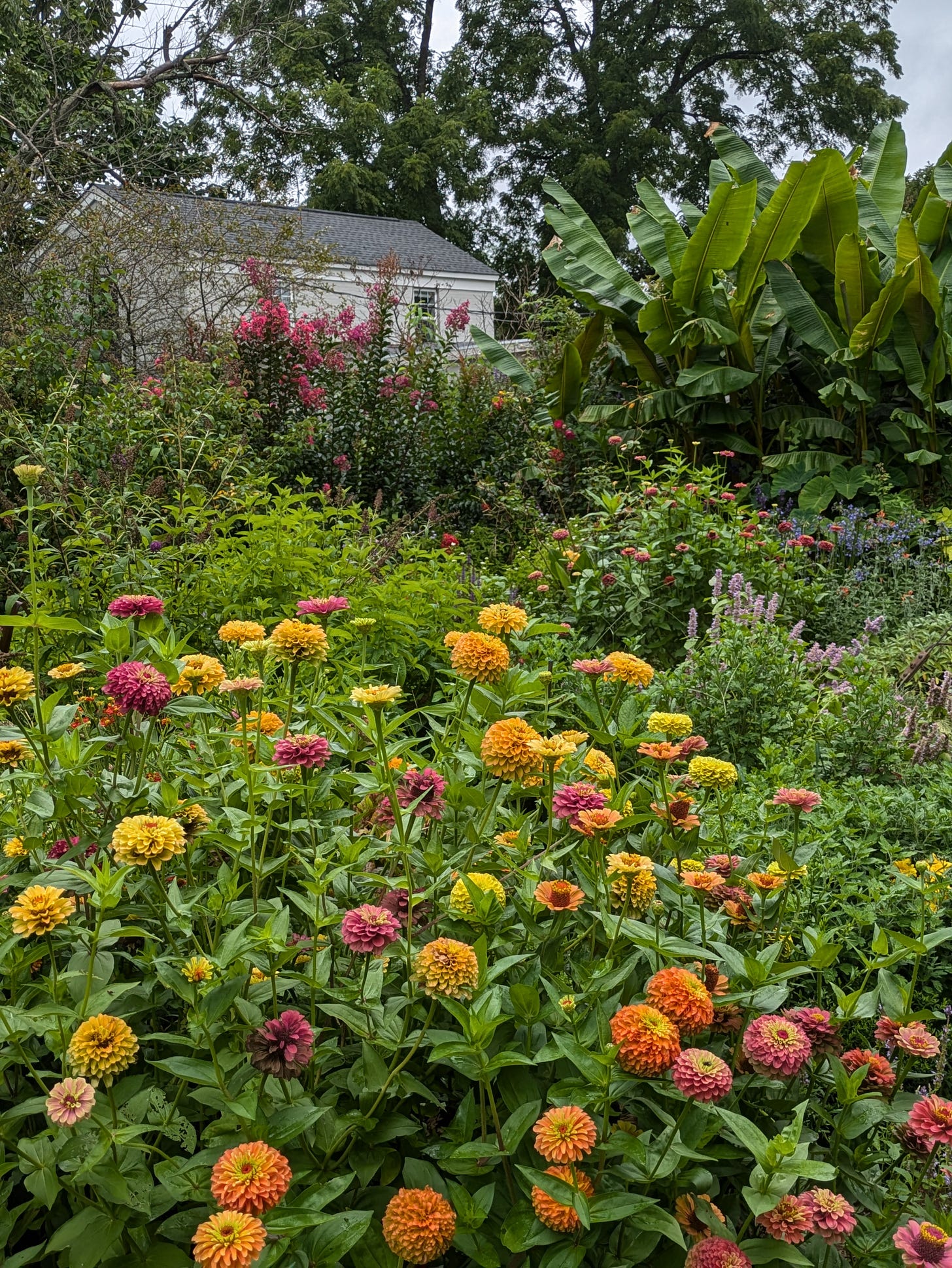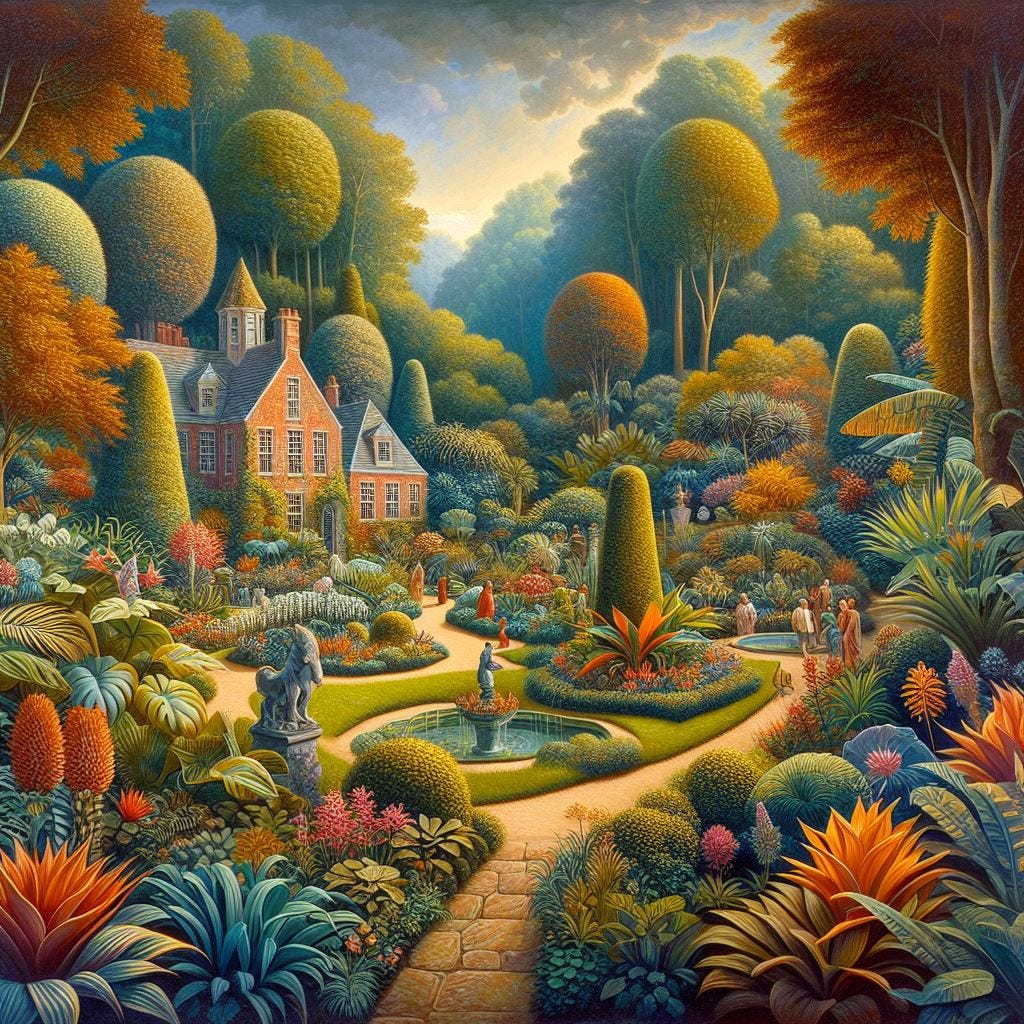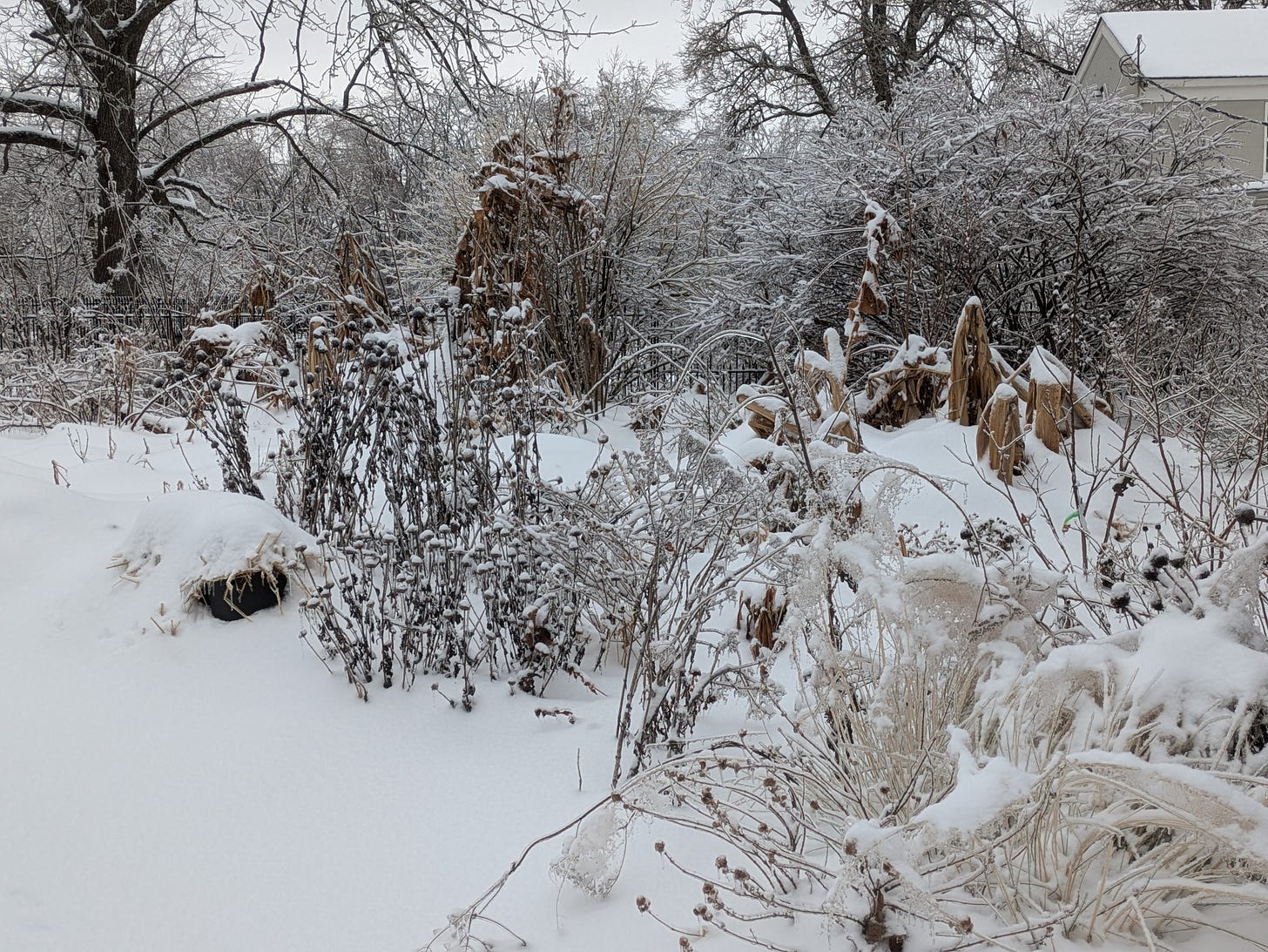Garden "rules" to break
I was thinking about grievous violations of the Rules of Gardening the other evening, when planting out annuals in the annex bed. This year I’m growing pure white highly scented Nicotiana alata. For several years there have been multicolored N. alata hybrids which return each year from the roots and reseed in the front bed. They’re highly decorative but not as fragrant as classic white N. alata, which was made famous by poet Edna St. Vincent Millay, who wrote “Where at dusk the dumb white nicotine awakes and utters her fragrance in a garden sleeping.”
I set out several of the dumb nicotines which had spent the past couple of weeks in pots hardening off outdoors and getting increasing sun exposure, then realized to my horror that I had transplanted an even number of plants - four to be exact. We have been told repeatedly that this is a gross violation of gardening etiquette; one must only utilize odd numbers of plants - three, five, seven etc. but never four, six or eight. Luckily I found one more pot of Nicotiana to add to the four already planted, saving the bed from geometric disgrace. But then I discovered another in the coldframe, adding up to six plants. Oh no!
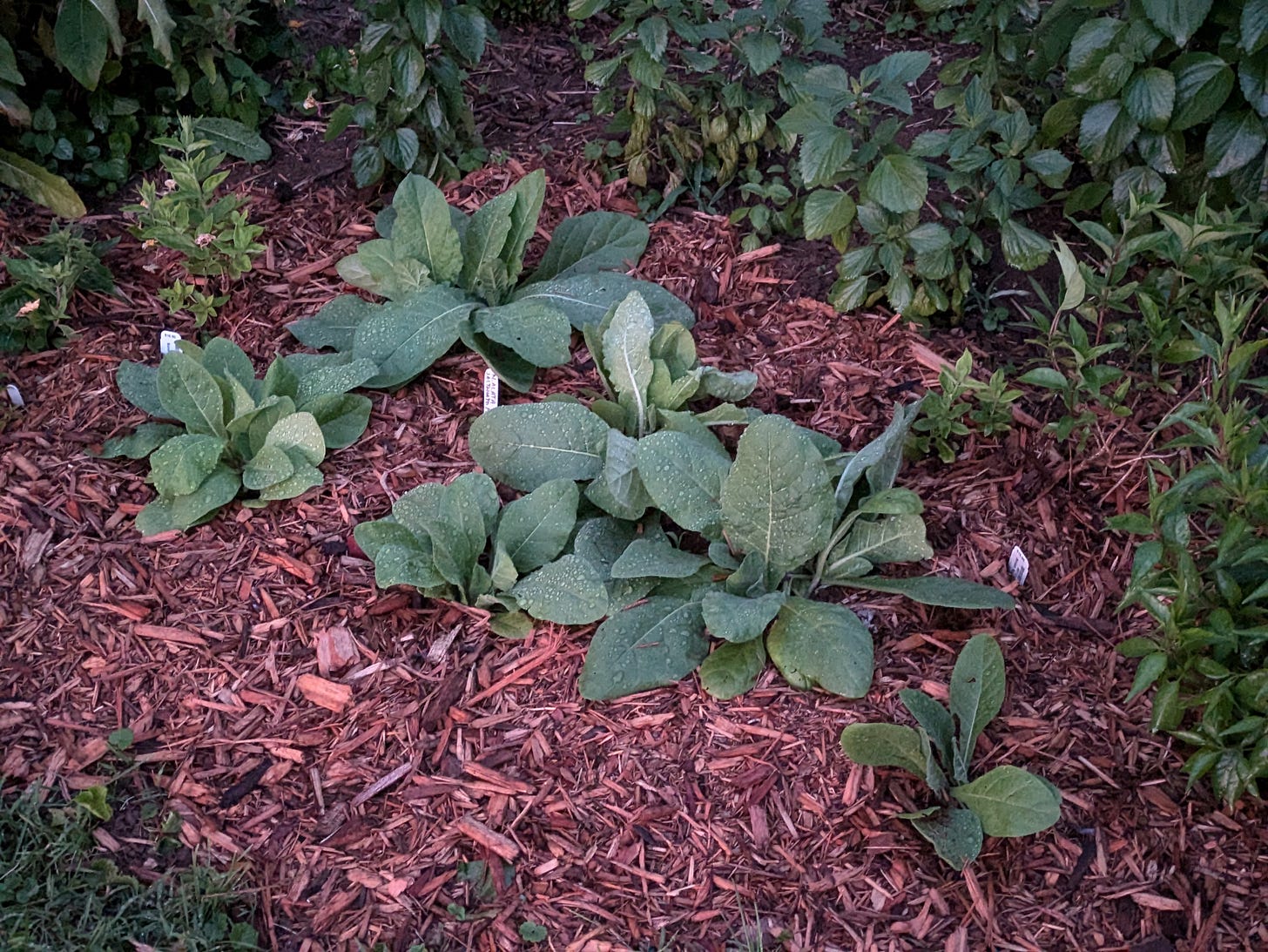
A Senior Landscape Architect from the U.K. tells us why it’s essential to plant in odd numbers.
Key Takeaways
1. Visual Impact:
Odd numbers create visual variety and aesthetic impact.
Clusters of plants are what we see in nature, making odd-numbered groupings look more natural.
2. Avoid Even Numbers:
Even numbers can bore the eye and appear unnatural.
Uniformity doesn’t work well in gardening—it’s an art form!
3. Cost Savings:
Garden centers often offer discounts for plants bought in 3s.
So, buying in odd numbers can actually help you save money—especially when settling into a new home.
“My golden rule of plant buying is that plants should always be bought in 3s, 5s, 7s or even 9s. A mistake many gardeners make is planting up in singles, pairs or even numbers.
It’s a mystery that Nature knows to create groupings in odd numbers, but we are not to question how this comes to be.
I’ve been violating this “golden rule” for a very long time. A major reason is that plants don’t stay in one place, but grow and spread quickly enough that soon you can’t tell just how many plants you started with. As another example, no one could have the slightest idea how many Campanula punctata ‘Ring of Bells’ I planted a couple of years ago, as they spread to form a solid mass.
Additionally, there’s no good reason to refrain from using one of a kind of plant, if that’s all you want or can afford (hint: it’s useful to buy a single plant and propagate it via cuttings, so that you can have a sizable planting composed of multiple separate specimens while only paying for the original). You may be accused of having a “collector’s garden”, but so what?
We’re also told to “unify” our garden borders by planting repeating sweeps of the same plants. Reasonable in theory, but impractical if your garden is limited in size and you crave variety. One solution might be to repeat similar forms/colors, but with different kinds of plants.
So much for golden rule #1.
Rule #2: Thou shalt not plant “exotics”.
Increasingly in recent years, there’s been a push to get people to commit to “natural” gardens using mostly or entirely “native” plants. If you don’t do this, you’re promoting environmental degradation by encouraging horribly invasive exotics that contribute to the extinction of deserving native plant and animal species. Natives mean diversity and diversity is good, right?
Well, it’s more complicated than that.
“Natives increase diversity” This presupposes that exotic species do not or cannot fill niches occupied by natives. Exotics can certainly add structural diversity and age class diversity to an urban and community forest. I would also argue that they add to species biodiversity as well. If we consider an urban community such as Lansing or Detroit, there are maybe six or seven native tree species that we could expect to have reasonable longevity as street trees. If we expand our choices to include non-natives we can expand the list to twenty or so. Not a huge number to be sure, but still a better hedge against catastrophic urban tree loss that the ‘native only’ policy.
“Exotic” species can be well-adapted to their new environments, and without necessarily displacing native species. Often they provide shelter and food for insects and larger animals who never previously encountered them.
Another problem with “native plants” is that while they may be native to your country or region, they could be foreign to the specific location where you garden and potentially cause problems. Phytolacca americana (pokeweed) has an enormous native range, largely in the eastern half of North America extending from Canada down to Mexico. It is the model of an invasive plant, reproducing voluminously from seed. I am constantly digging out seedlings and larger plants that have sneaked into the garden; once they have reached a certain size they can’t readily be pulled since their tuberous roots resist mightily. Despite its decorative aspects (the purple berries are attractive in fall) Phytolacca is fully capable of crowding out other plants, native or exotic, in its endless quest to form a monoculture of itself.
I estimate that at best, 20% of the ornamental plants I grow could be classified as native, at least to somewhere in my general region of America. They include but are not limited to hybrids of Baptisia, Echinacea, Achillea (yarrow), Aquilegia and Agastache foeniculum. All are highly useful and attractive plants, but I’m not about to limit myself to them for ideologic reasons. The ornamental sages, agapanthus, crinums, hardy bananas, palms, crepe myrtles etc. that make up a large part of the garden are generally well-adapted here and stay put (it’s exceedingly unlikely that the windmill palms I’m planting this year will take over roadsides and forests in central Kentucky any time in the near future, even with climate change).
Then we come to Rule #3 - that gardeners must pay heed to Color Theory.
The amount of effort and angst expended in getting colors just right in the garden is bizarre, but there are people for whom this task is paramount. Color fashions come and go, but pastelization (for its supposed soothing nature) and white gardens remain popular.
If you want to succeed in this matter, it is deemed essential that you familiarize yourself with the color wheel and avoid garish colors and combinations that might offend, well, someone. Here’s a typical list of do’s and don’ts from the New York Botanical Garden for your edification.
As for the white garden: “One could not help but be inspired by Vita Sackville-West’s White Garden at Sissinghurst—said to be more imitated than any other garden in the world. Enclosed by a tall hedge, this garden room is subdivided by low hedges defining beds filled with grey and silver leaves and white flowers billowing onto the paths.”
One wonders how many Sissinghurst imitations pleased their makers and survived in the long run. A key problem with such gardens (aside from the essential boredom of monotone plantings) is that meticulous maintenance/deadheading is essential, as the effect is easily spoiled by white blossoms drooping and turning brown, and degenerating gray/silvery leaves dying out. I remember a white garden that was established at the Staten Island Botanical Garden years ago, and the ultimate impression it gave was of dingy laundry that should have been taken in from the line before the elements got to it.
There are any number of self-proclaimed artists who extol the virtues of their craft in helping them to attain the pinnacle of color theory (credit to nature is seldom given).
At risk of upsetting the virtuous color applecart, I’ve always enjoyed Christopher Lloyd’s views on the matter.
“…I do believe that excitement is an essential element in the most successful gardening…You will sometimes…see a small front garden that is literally packed with every colour under the sun…It is wholly undigested and yet it is exuberant; it is full of joy, and that’s a feeling that immediately communicates. ‘What fun they’ve had!”
Given the right circumstances, I believe that every colour can be successfully used with any other and that is the message I hope to convey…There is something called the Colour Wheel that I have never understood and that I shall not therefore attempt to explore or explain. It is somehow intended to demonstrate which colours may successfully be put together and which may not, but the outcome makes no sense to me…Rules, it has been said are made to be broken.
Not everyone has the gift of true originality but we can at least free ourselves of the unnecessary shackles imposed by convention. Go for it, would be my motto.”
- from “Color For Adventurous Gardeners”
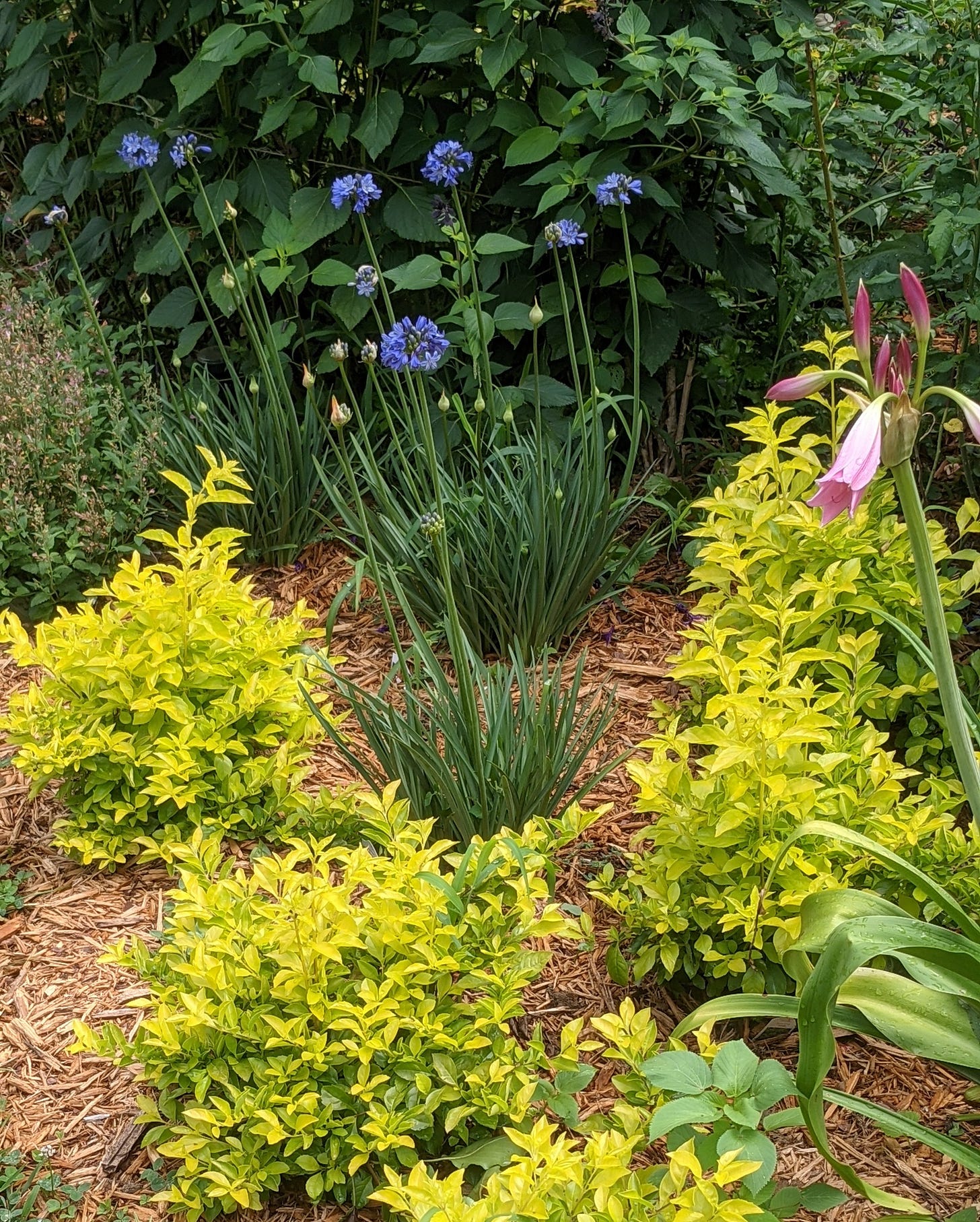
Rule #4: one must have contempt for lawns. Coming across my Facebook feed this past week was a classic guilt-tripping diatribe.
“The American lawn is one of the greatest mass brainwashings of all time. How we all signed up to spend hours growing and cutting a non-native monoculture that we lace with poisons never ceases to amaze me.”
Really, what kind of terrible person would have a lawn? Surprisingly, some feel that lawns have environmental and even social benefits.
Social benefits???
“Well-kept lawns support neighborhood interaction and strengthen the social connections within a community.”
Really? Live in a neighborhood where lawn care is an obsession and you’ll potentially be driven up the wall by constant mowing and weed-eating. Back in Ohio we had a neighbor living a couple doors down who was fanatical about keeping his lawn trimmed. This guy (a psychiatrist, as it happens) was out there at least twice a week on his lawn tractor, maintaining the perfect grass height. Physician, heal thyself.
For those not quite ready to worship at the temple of Scotts Inc., there are still environmental advantages to be had in non-compulsive lawn maintenance. Have you ever thought about keeping the Mesostigmata population thriving? These people have.
Our lawn/meadow acreage definitely falls into the low-intensity range of upkeep. Aside from mowing about every ten days, the turf, an amalgamation of Kentucky bluegrass, clover, wild violets and whatever else has insinuated itself into the mix receives no applications of fertilizer or herbicides, and is never watered. I have not done a detailed analysis of the life forms it supports. We do have a thriving population of tunneling critters (moles or gophers) whose mounds are a bit unsightly. Fortunately, repellent pellets have done a decent job of keeping them away from the main border and annex bed.
The only social connections I’ve made via the lawn thus far have been with barn swallows, who’ve learned to follow the lawn tractor, swooping across its path like little Messerschmitt fighter planes, gobbling flying insects stirred up by the mower’s passage.
That’s it for horticultural rule-breaking for now. More in a future installment.


